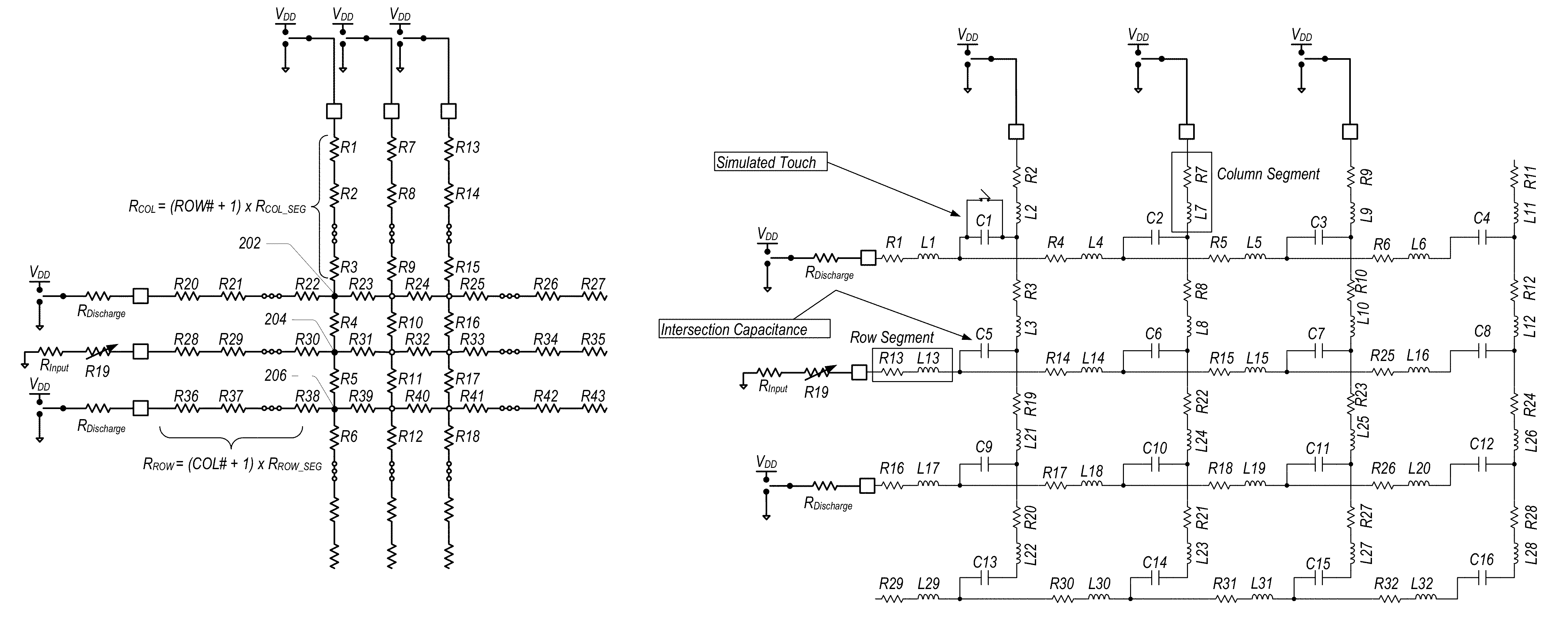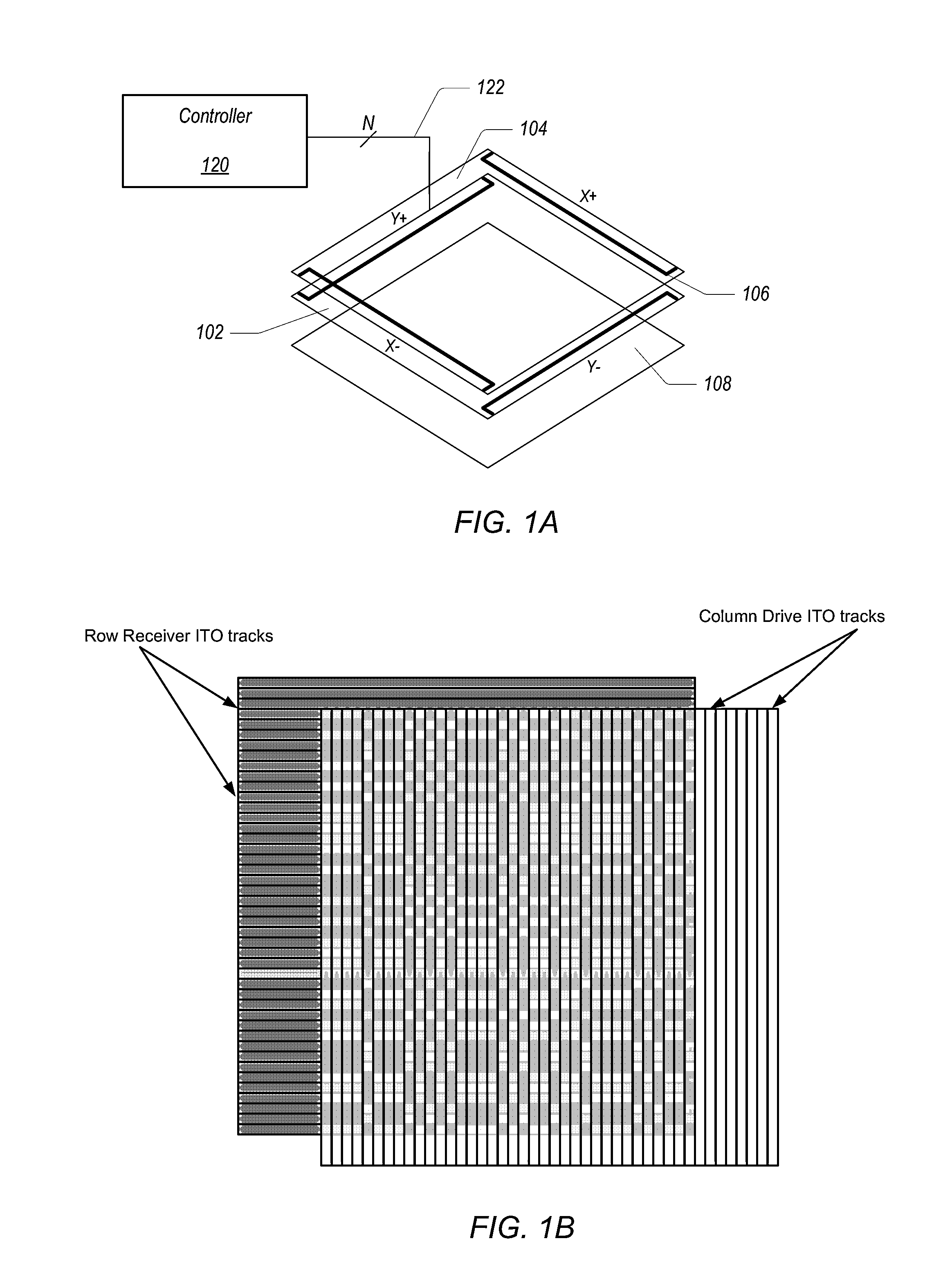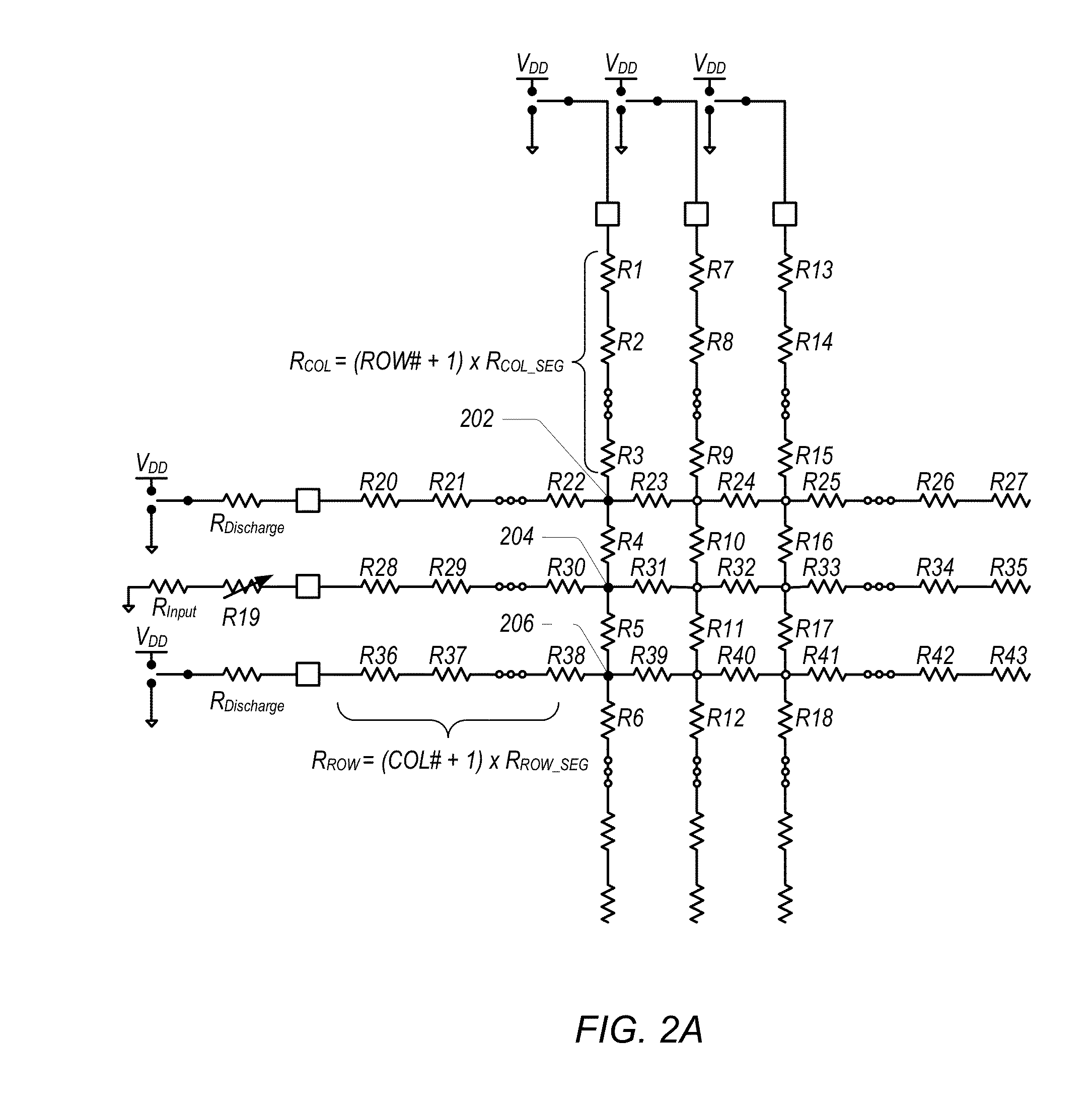Resistive touch panel with improved termination
a technology of resistive touch panel and termination, applied in the field of resistive matrix touch panel, can solve the problems of serial sampling of present-day solutions, and achieve the effects of reducing the overall effect of the rc network, increasing the available signal, and increasing the amplitude signal
- Summary
- Abstract
- Description
- Claims
- Application Information
AI Technical Summary
Benefits of technology
Problems solved by technology
Method used
Image
Examples
first embodiment
DC Analysis in a First Embodiment
[0065]In one embodiment, a TP with a ˜16:9 aspect ratio using a total of 252 input / output (I / O) pins for 156 rows and 96 columns may be selected. The diagram in FIG. 2B shows a pertinent portion of the assumed panel, and how to calculate the resistance values between the sites being touched and the edge of the column drive or row receiver. In FIG. 2A, the shaded nodes at the resistor intersections (nodes 202, 204, 206) indicate points where the TP (matrix) is touched. The open nodes (or open circles) at the resistor intersections indicate points where the TP (matrix) remains untouched. As shown in FIG. 2B, a simulated touch is represented by a short across the intersection capacitance of the intersections in the driven column. Analysis is provided for a single column driven, and multiple touches occurring on that column. The variable resistor R19 is not included in this analysis.
[0066]The analysis shows the detrimental effects of terminations to grou...
second embodiment
DC Analysis in a Second Embodiment
[0076]In a second embodiment, a TP with a 4:3 aspect ratio using a total of 250 I / O pins for 103 rows and 137 columns may be selected, with a maximum expected resistance of 100 kΩ. The TP pattern is assumed to be square, meaning the resistance per segment in either row or column are equal. Again, the diagrams in FIGS. 2A and 2B show the assumed panel (simplified and in more detail, respectively), and how to calculate the resistance values between the sites being touched and the edge of the column drive or row receiver. As before, in FIG. 2A, nodes 202, 204, and 206 at the resistor intersections indicate points where the TP (matrix) was touched, and the unshaded nodes at the resistor intersections indicate points where the TP (matrix) was untouched. As indicated in FIG. 2B, a short across the intersection capacitance corresponds to a simulated touch. Analysis is again provided for a single column driven, with multiple touches occurring on that column...
PUM
 Login to View More
Login to View More Abstract
Description
Claims
Application Information
 Login to View More
Login to View More - R&D
- Intellectual Property
- Life Sciences
- Materials
- Tech Scout
- Unparalleled Data Quality
- Higher Quality Content
- 60% Fewer Hallucinations
Browse by: Latest US Patents, China's latest patents, Technical Efficacy Thesaurus, Application Domain, Technology Topic, Popular Technical Reports.
© 2025 PatSnap. All rights reserved.Legal|Privacy policy|Modern Slavery Act Transparency Statement|Sitemap|About US| Contact US: help@patsnap.com



